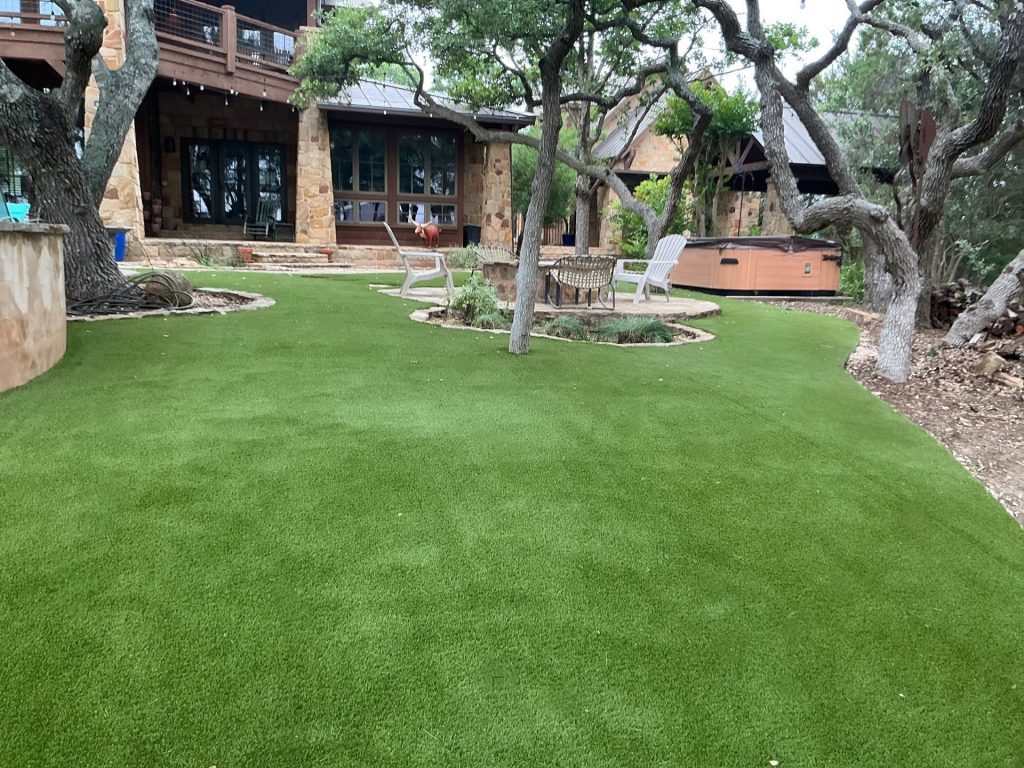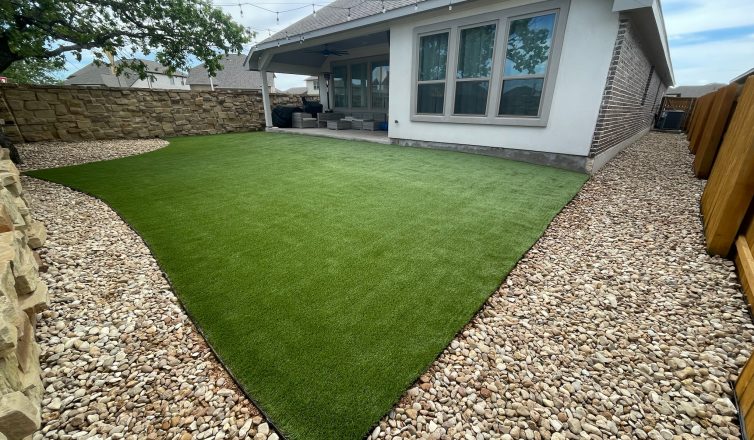If you live in the South and you’re considering artificial turf, a natural question comes up: When is the best time of year for artificial turf installation? The answer depends heavily on where you live. Southern climates span everything from the dry plains of West Texas to the humid coastlines of Louisiana and Florida. Each region comes with unique weather patterns, soil conditions, and seasonal quirks.
This guide walks you through how to time your artificial lawn installation for the best results, whether you’re in Austin, Atlanta, or anywhere in between. With the right preparation and timing, you’ll extend the life of your turf and ensure a clean, long-lasting install.
Quick Summary
The best time for artificial lawn installation varies across Southern climates.
Fall is often ideal due to moderate temps and lower rainfall.
Spring works well but can be delayed by heavy rain in some regions.
Summer installs thrive in dry areas like West Texas but need heat precautions.
Winter is possible in warmer cities but requires careful planning.
Regional soil types and climate conditions should guide your timing.
Why timing and terrain matter
The Southern U.S. is not a one-size-fits-all region when it comes to landscaping. In Central Texas, heavy clay soil can cause drainage issues if not properly compacted. In contrast, sandy soils along the Gulf Coast drain quickly but may require more stabilization. The Southeast is humid and green most of the year, while the Texas Panhandle sees larger temperature swings and occasional hard freezes.
Beneath every artificial turf lawn is a layered system that includes drainage, a compacted base layer, and geotextile fabric to prevent shifting or weed growth. Temperature, rainfall, and soil moisture all affect how that system performs over time.
In places like Houston or Baton Rouge, for example, the combination of humidity and clay-rich soil makes milder weeks ideal for a clean installation. In drier West Texas towns, artificial turf installers may prefer summer conditions, when rainfall is rare and the base can dry and settle quickly.
Artificial turf removes a lot of lawn headaches, including mowing, watering, and mud. But the success of an installation still depends on how well the base is prepped and how stable the climate is during the project. Choosing the right time of year ensures your turf settles correctly and holds up for years to come.
Season by Season: When to book your project
The best time to install turf depends on the season. Here’s how each one affects the process across the South.
Spring
Spring is one of the most popular seasons for turf installation, especially across Central Texas and Gulf Coast regions. Temperatures are moderate, the days are longer, and soil is easier to work with.
However, spring rains can be a challenge. Cities like Houston, New Orleans, and even parts of Austin experience frequent storms that can delay installation or affect compaction. It’s important to schedule work during dry windows and work with teams who know how to manage clay-heavy soil during wetter months.
In the broader Southeast, early spring is a great time to start prep work, especially as soil begins to thaw and dry out from winter moisture.
Summer
While the intense heat of summer might make it seem like the worst time for artificial turf installation, it can actually be a good fit for certain parts of the South. West Texas, Oklahoma, and New Mexico often experience long, dry summers that help installation teams work quickly and efficiently.
The key is avoiding the hottest part of the day. Most crews shift work to early mornings or late afternoons to beat the heat and reduce material stress. In Gulf Coast areas, high humidity and tropical storms make summer less reliable for turf work, so it’s wise to be flexible with scheduling and watch the forecast closely.
Fall
Fall is often considered the best time for turf installation across much of the South. Cooler temperatures reduce the risk of turf warping, rainfall typically drops off, and soil remains soft enough to compact without excess moisture.
In North Texas, Georgia, and the Carolinas, this season offers a sweet spot between extreme weather events and holiday season slowdowns. Fall also tends to be a lower-demand season for installations, meaning you may find more flexible scheduling options and better pricing from local providers.
Winter
Winter installations are possible in the South, but they require care and expertise. In warmer metro areas like Dallas, Houston, and Atlanta, the ground rarely freezes, which means turf work can continue throughout the season.
That said, occasional cold snaps in places like Lubbock, Amarillo, or the higher elevations of Tennessee and North Carolina can stall projects. If temperatures dip below 45 degrees, turf becomes stiff and difficult to work with, and the ground may be too hard to prep properly. Local artificial turf installers often build in extra prep days or heating tools for these scenarios.

Regional factors that influence installation
Understanding your region’s soil and climate helps guide the timing and scope of your project. Here’s a breakdown of key conditions across the South:
- Gulf Coast (Houston, Galveston, New Orleans): These areas feature sandy soils and high rainfall. Turf installations here require excellent drainage systems and base layers that won’t shift during storms.
- Central Texas (Austin, San Antonio): Known for heavy clay soil, this region often needs extra base compaction and drainage prep, particularly during wet months.
- Texas Hill Country (Boerne, Kerrville, Dripping Springs): Rocky terrain requires grading and leveling before turf goes down. Fall is typically best here, especially after summer heat has passed.
- Texas Panhandle and Northern Oklahoma: With large temperature swings and harder freezes, late spring and early fall are ideal. Winter installations may require additional prep.
- Deep South (Georgia, Mississippi, South Carolina): These regions deal with humidity and storm seasons. Drier months like October or early spring work well for turf projects.
Working with a company that understands these conditions is critical. Regional expertise can mean the difference between a flawless install and one that buckles after the first storm.
Preparing your property for installation
Depending on where you live, your artificial turf installation prep steps might vary. In low-lying areas like New Orleans or Galveston, you’ll need to make drainage the top priority. In West Texas, dust control is critical to prevent future shifting. In the Hill Country, grading out uneven slopes and rocky patches can dramatically improve results.
Whether it’s clearing vegetation, grading slopes, or addressing drainage, make sure your installation crew walks through your site with a localized plan. One-size-fits-all doesn’t work in Southern landscapes.
Post-install maintenance: What to know by season
Artificial turf is low-maintenance, but not no-maintenance. After your install, you’ll still want to rinse off pollen in the spring, clear off storm debris in the fall, and check seams or infill levels during extreme heat or drought.
In humid areas, be aware of mold or organic buildup after heavy storms. In drier zones, dust and debris may need to be blown off more frequently.
FAQ
Is there a bad time to install synthetic turf?
Not really—at least not with the right prep and an experienced team. Many homeowners assume synthetic turf can only be installed in spring, but that’s a myth. The reality is, every season has pros and cons. As long as you account for weather, soil, and crew availability, turf can be successfully installed almost any time of year across the South.
Does ideal turf installation timing vary across Texas?
Absolutely. In North Texas, freeze cycles and soil hardening make spring and fall safer bets for turf installation. South Texas cities like Houston and San Antonio have longer installation windows but require smart planning around rain and humidity. Every region in Texas behaves differently—choose a partner who understands the nuances of your location.
Does installation timing affect pricing?
Yes, especially in high-demand markets like Dallas, Austin, or Atlanta. Spring and early fall are peak seasons, which can mean tighter schedules and higher pricing. On the other hand, slower seasons like winter may come with discounted pricing or increased flexibility.
If you’re working with a tight budget, consider scheduling during the offseason in your area. Just be sure to account for weather constraints, and don’t sacrifice quality for price.
Final Thoughts: Local expertise is everything
Artificial lawn installation is not just about rolling out turf. It’s about making sure the prep is solid, the soil is ready, and the weather is working in your favor. When you align your project with your local climate and choose a team that knows your region, you’ll get better performance, longevity, and value from your turf investment.
If you’re thinking about installing artificial turf in your Southern yard, Lone Star Turf can help you figure out the best timing for your specific location. Reach out to schedule a free consultation or head to our Instant Quote tool for a free estimate.
Let’s help you get your weekends back—starting with smart turf planning.
Want to learn more about artificial turf? Check out our Ultimate Guide to Artificial Turf.
